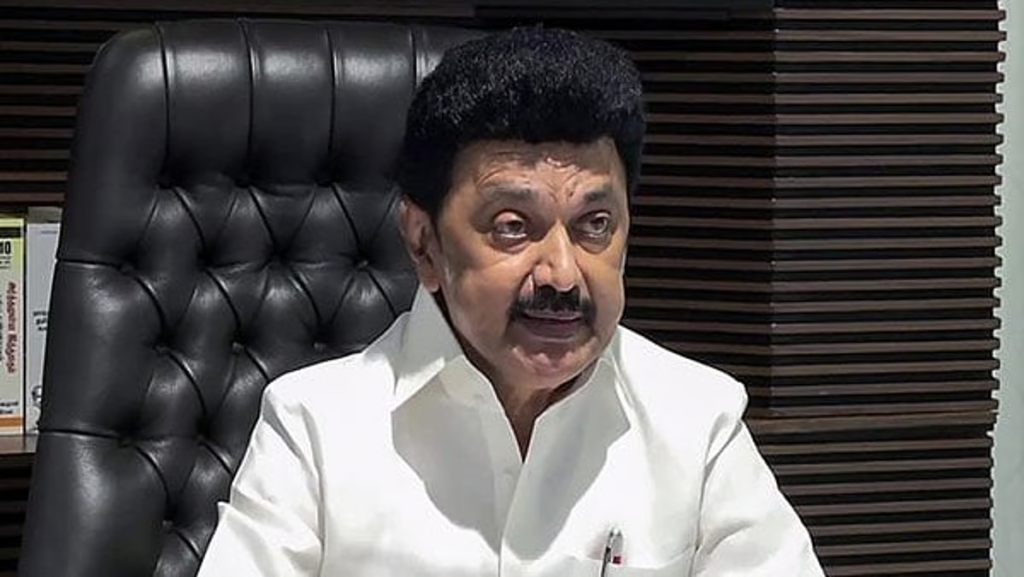| UPSC RELEVANCE- GS Paper 1: Indian Society – Social Issues, Caste System. GS Paper 2: Polity – Social Justice, Equality. |
Why in News
In April 2025, Tamil Nadu Chief Minister M.K. Stalin announced in the State Assembly that all villages with the suffix ‘colony’ or names reflecting caste identities or derogatory references — such as Pallappatti, Paraiyappatti, Naavidhan Kulam, Paraiyan Kulam, and Sakkilippatti — would be renamed.
The move aims to remove entrenched caste identifiers from official nomenclature, records, and public usage — a step positioned as part of Tamil Nadu’s Dravidian social justice ethos and constitutional obligations to uphold dignity and equality.

Background: The Linguistic Geography of Caste Segregation
1. Historical Roots
- Pre-colonial Tamil Nadu: Lower-caste communities were physically segregated into separate hamlets (cheris), often located at the periphery of dominant caste settlements.
- Colonial Period: The British administration recorded these cheris as distinct habitations in revenue surveys, embedding segregation into formal documentation.
- Post-Independence Shift: The term ‘colony’ replaced cheri in official records, often after housing schemes for Scheduled Castes were built. However, this did not erase the implicit caste coding in addresses.
2. Persistent Social Signalling
- In rural Tamil Nadu, mentioning a village “colony” in an address instantly identifies the caste composition of its residents.
- Example: In a 2019 survey in Cuddalore district, Dalit students reported that school admission forms with colony addresses triggered discrimination from peers and even teachers.
3. Legal Awareness
- Untouchability Offences Act, 1955 and Protection of Civil Rights Act, 1976 criminalised overt caste discrimination, but linguistic markers like colony remained outside explicit legal prohibition.
Constitutional and Legal Perspective
Relevant Constitutional Provisions
- Article 14 – Equality before law.
- Article 15(2) – Prohibits caste-based exclusion from public spaces.
- Article 17 – Abolition of untouchability.
- Article 21 – Right to life with dignity.
- Article 51A(e) – Fundamental duty to promote harmony.
Judicial Endorsement of De-stigmatisation
- State of Karnataka v. Appa Balu Ingale (1995) – Physical segregation of Dalits violates the spirit of Article 17.
- Safai Karamchari Andolan v. Union of India (2014) – Court emphasised ending all caste-based degrading practices, not merely manual scavenging.
- S. Rajesh Kumar v. District Collector (2021, Madras HC) – Names reflecting caste hierarchy in official records violate constitutional morality.
Supreme Court and Constitutional Morality Perspective
- Doctrine of Positive Obligation – State must actively dismantle entrenched discrimination (Indian Young Lawyers Association v. State of Kerala, 2018).
- Substantive Equality – Beyond removing explicit discrimination, must eliminate systemic markers of exclusion (Navtej Singh Johar v. Union of India, 2018).
- Human Dignity Principle – Court has repeatedly linked dignity with removal of social humiliation (Francis Coralie Mullin v. Union Territory of Delhi, 1981).
Supportive Arguments for the Reform
- Restores Dignity – Removes derogatory or segregating identifiers from daily use.
○ Example: In Kerala’s Alappuzha district, renaming Pulaya Colony to Indira Nagar in 2012 improved perceptions in school and workplace contexts. - Constitutional Alignment – Directly operationalises Articles 14, 17, and 21.
- Social Messaging – Acts as a state-level signal against casteism, reinforcing social justice values.
- Psychological Empowerment – Frees younger generations from address-based stigma.
- Precedent Creation – May encourage states like Andhra Pradesh and Gujarat to follow suit.
Counter Arguments
- Tokenism Concern – Critics argue structural inequalities in land ownership, education, and political power remain unaddressed.
- Cultural Memory Loss – Some fear erasing historically significant names (though others argue this ‘memory’ perpetuates hierarchy).
- Implementation Cost – Large-scale bureaucratic updates require funds and manpower.
- Disputes Over New Names – New nomenclature may provoke local rivalries or political contestation.
Comparative Perspective
- Indian Examples:
- Kerala: Renamed hundreds of caste-revealing localities since the 1980s.
- Maharashtra: Eliminated ‘Maharwada’ from multiple villages.
- Global Parallels:
- South Africa: Renamed apartheid-era towns (e.g., Verwoerdburg → Centurion).
- USA: Removed racially derogatory place names like “Squaw Valley” (California).
Contemporary Challenges in Implementation
Administrative Complexity
○ Updating revenue maps, postal codes, electoral rolls, and government schemes databases.
○ Example: When Maharashtra removed ‘Maharwada’ from records, land title deed updates took over two years.
- Digital Synchronisation
○ Changes must reflect in Aadhaar, banking KYC, GST registrations, and school databases to prevent mismatches. - Social Resistance
○ Some older residents feel emotional attachment to existing names. In certain panchayats, disputes may arise over proposed alternatives. - Risk of Pure Symbolism
○ Without parallel socio-economic reform (housing upgrades, education, employment opportunities), name changes alone may not break caste barriers.
Role of Local Self-Government
- Gram sabhas can be made the first forum for proposing new names, ensuring community consensus.
- Local involvement prevents accusations of top-down imposition.
Way Forward
- Participatory Process – Community-led name selection avoids alienation and ensures ownership.
- Awareness Campaigns – Gram sabhas, schools, and local media can explain the rationale to combat resistance.
- Couple Symbolic Change with Material Reform – Housing quality upgrades, sanitation, and skill training in renamed areas.
- Legal Safeguard – Tamil Nadu could enact a “Caste-Neutral Place Naming Act” to prevent future recurrence.
Conclusion
Tamil Nadu’s move is more than administrative housekeeping — it is an assertion of constitutional morality and the Dravidian social justice legacy. While symbolic, it chips away at the linguistic scaffolding of caste segregation. If followed by sustained socio-economic reform, this could help shift caste from a lived experience to a historical memory — a transformation vital for a truly egalitarian India.
MainsPractice question
Q:“Renaming caste-linked settlements is a symbolic yet necessary step towards substantive equality in India. Critically examine.”(250 words, 15 marks)
SOURCE- THE HINDU
Found this helpful?
Bookmark for revision, Practice the mains question, and
Share with fellow aspirants! THANK YOU
